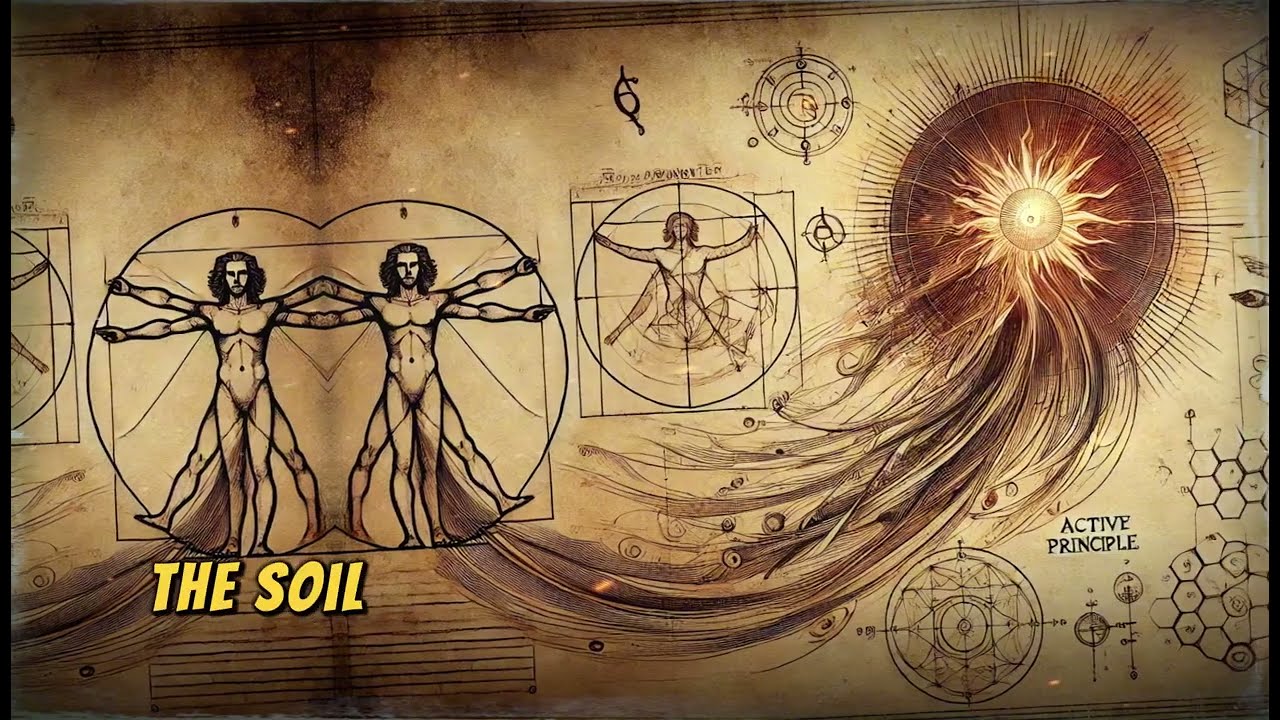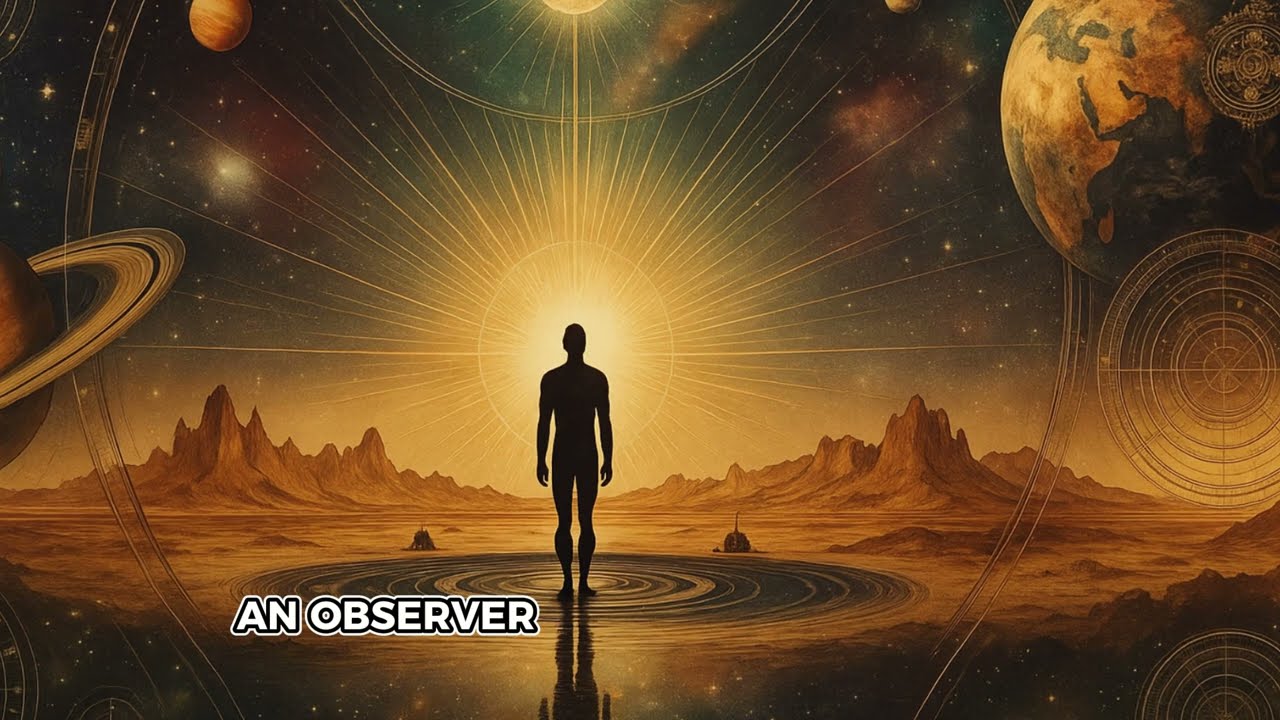The Law of Gender is a profound principle rooted in ancient wisdom, often misinterpreted in today’s fast-paced world. This article explores the real meaning of the Law of Gender, revealing how it encompasses more than just biological differences—it delves into the universal dynamics of creation, balance, and duality. By examining its historical, philosophical, and practical aspects, readers will gain a deeper understanding of how this law influences personal growth, relationships, and even modern science. Whether you’re new to Hermetic teachings or seeking to refine your knowledge, this exploration aims to illuminate the transformative power of gender as a cosmic force.
Historical Origins and Evolution

The Law of Gender, as part of the Seven Hermetic Principles outlined in “The Kybalion,” has a rich history that spans millennia, drawing from ancient civilizations and evolving through philosophical traditions. This principle asserts that gender is present in all things, manifesting as masculine and feminine energies that drive creation and balance. Understanding its historical context is crucial to grasping the real meaning of the Law of Gender, as it reveals how this concept has been adapted and reinterpreted over time to address human experiences of duality and harmony.
Ancient Roots in Mythology and Philosophy
The origins of the Law of Gender can be traced back to ancient Egypt and Greece, where it was intertwined with mythological narratives and philosophical inquiries. In Egyptian mythology, the god Osiris and goddess Isis embodied the masculine and feminine principles, symbolizing creation, death, and rebirth—a cycle that mirrors the law’s emphasis on polarity and generation. Similarly, Greek philosophers like Plato and Aristotle explored gender not just biologically but metaphysically, with Plato’s “Symposium” discussing how souls seek completeness through union of opposites. This ancient perspective laid the foundation for the law, viewing gender as an energetic force rather than a fixed trait.
Moving to Hermeticism, which synthesized Egyptian and Greek ideas, the Law of Gender became formalized in texts like the Emerald Tablet. Here, it was presented as a universal law governing all existence, where masculine energy represents action and assertion, while feminine energy embodies receptivity and nurturing. This duality was not confined to humans but extended to elements, emotions, and cosmic events, highlighting the law’s role in perpetual creation. By recognizing these roots, we see that the real meaning of the Law of Gender is about dynamic interplay, not static roles, fostering a holistic view of reality.
In practical terms, ancient societies applied this law in rituals and daily life, such as fertility rites that honored both aspects of gender to ensure prosperity. This historical lens shows how the law evolved from spiritual practices to a philosophical cornerstone, influencing how cultures understood balance and transformation.
Influence on Religious and Esoteric Traditions
As the Law of Gender spread through various cultures, it influenced major religious and esoteric traditions, adapting to different contexts while retaining its core essence. In Hinduism, for instance, the concept of Shiva and Shakti represents the masculine and feminine principles, illustrating how creation arises from their union—a direct parallel to the Hermetic law. This idea permeated Tantric practices, where achieving spiritual enlightenment involved harmonizing these energies within oneself.
In the Abrahamic religions, similar themes appear in allegorical forms, such as the biblical story of Adam and Eve, which can be interpreted as a manifestation of gender duality leading to knowledge and growth. Esoteric groups like the Rosicrucians and Freemasons later incorporated the Law of Gender into their teachings, using it to explain alchemical processes where base materials are transformed through the union of opposites. This evolution demonstrates how the real meaning of the Law of Gender transcends cultural boundaries, serving as a metaphor for personal and collective evolution.
Moreover, in the Renaissance period, thinkers like Paracelsus revived interest in Hermetic principles, applying the law to medicine and natural philosophy. They saw gender energies in the natural world, such as the sun (masculine) and moon (feminine), influencing tides and growth. This historical adaptation underscores the law’s versatility, showing how it has been a tool for understanding human nature and the universe’s intricate balance.
Modern Interpretations and Adaptations
In contemporary times, the Law of Gender has been reinterpreted through the lens of psychology, self-help, and New Age spirituality, building on its ancient foundations. Influential figures like Carl Jung drew from Hermetic ideas in developing his theory of anima and animus, which represent the unconscious feminine and masculine aspects within each individual. This psychological approach aligns with the real meaning of the Law of Gender, emphasizing inner harmony rather than external stereotypes.
Today, movements in gender studies and feminism engage with the law by challenging traditional binaries, promoting a more fluid understanding that echoes Hermetic duality. For example, authors like Wayne Dyer and Deepak Chopra have popularized the law in personal development, teaching that balancing masculine drive with feminine intuition can lead to greater creativity and fulfillment. This modern evolution highlights the law’s relevance in addressing contemporary issues like gender equality and mental health.
As society continues to evolve, the Law of Gender adapts to new paradigms, such as quantum physics, where concepts of wave-particle duality mirror the law’s principles. This ongoing reinterpretation ensures that the real meaning of the Law of Gender remains a vital concept for navigating life’s complexities and fostering personal growth.
Core Principles and Common Misconceptions


At its heart, the Law of Gender teaches that everything in the universe possesses both masculine and feminine elements, working in tandem to create and sustain life. This principle is often misunderstood as solely referring to biological sex or societal roles, but the real meaning of the Law of Gender is far deeper, encompassing energetic polarities that drive all forms of creation. By clarifying its core tenets and dispelling myths, we can appreciate how this law promotes balance and harmony in every aspect of existence. A common error is viewing gender as binary and rigid, whereas the law emphasizes fluidity and interdependence.
Defining the Law of Gender and Its Key Components
The Law of Gender, as outlined in Hermetic philosophy, states that gender is manifested in all things, not just humans, and that this duality is essential for generation, regeneration, and evolution. Masculine energy is typically associated with qualities like assertiveness, logic, and outward action, while feminine energy involves intuition, receptivity, and nurturing. Together, they form a complete cycle, much like the yin and yang in Taoist philosophy. This interplay is not about physical attributes but energetic vibrations that influence thoughts, emotions, and actions.
In practice, the law suggests that true creation occurs when these energies are balanced. For instance, in personal endeavors, a project might require masculine initiation (starting a business) balanced with feminine nurturing (developing ideas intuitively). Understanding this helps individuals harness both aspects for holistic development. The real meaning of the Law of Gender lies in recognizing that imbalance—such as overemphasizing one energy—can lead to stagnation or conflict, while harmony fosters growth and fulfillment.
Moreover, the law extends beyond individuals to cosmic
Core Principles and Common Misconceptions


At its heart, the Law of Gender teaches that everything in the universe possesses both masculine and feminine elements, working in tandem to create and sustain life. This principle is often misunderstood as solely referring to biological sex or societal roles, but the real meaning of the Law of Gender is far deeper, encompassing energetic polarities that drive all forms of creation. By clarifying its core tenets and dispelling myths, we can appreciate how this law promotes balance and harmony in every aspect of existence. A common error is viewing gender as binary and rigid, whereas the law emphasizes fluidity and interdependence.
Defining the Law of Gender and Its Key Components
The Law of Gender, as outlined in Hermetic philosophy, asserts that gender is manifested in all things—not just humans—and that this duality is essential for generation, regeneration, and evolution. Masculine energy is typically associated with qualities like assertiveness, logic, and outward action, while feminine energy involves intuition, receptivity, and nurturing. Together, they form a complete cycle, much like the yin and yang in Taoist philosophy.
This interplay is not about physical attributes but rather energetic vibrations that influence thoughts, emotions, and actions. When one begins to explore the real meaning of the Law of Gender, it becomes clear that these energies exist within everyone, regardless of gender identity. For instance, individuals who identify as male may possess significant feminine qualities, while those identifying as female can embody masculine traits.
In practice, the law suggests that true creation occurs when these energies are balanced. Consider personal endeavors; a project might require masculine initiation (starting a business) balanced with feminine nurturing (developing ideas intuitively). Understanding this helps individuals harness both aspects for holistic development. The imbalance—such as overemphasizing one energy—can lead to stagnation or conflict, while harmony fosters growth and fulfillment.
Moreover, the law extends beyond individuals to cosmic principles, where the universe itself thrives on the interaction between these dual forces. From the smallest atom to the vast cosmos, the interplay of masculine and feminine energies serves as a foundational principle that holds reality together. Recognizing this interconnectedness offers insight into how we relate to ourselves, others, and the world at large.
Common Misconceptions About the Law of Gender
Despite its profound implications, many misconceptions surround the Law of Gender. One prevalent myth is the belief that it supports traditional gender stereotypes by strictly defining masculine and feminine traits. However, such an interpretation undermines the dynamic essence of the law. It encourages fluidity rather than rigidity, asserting that everyone embodies a unique mix of these energies that shape their personality and experiences.
Furthermore, some interpret the law to imply that one must choose to embody either masculine or feminine traits exclusively. Instead, the real meaning of the Law of Gender suggests that embracing both aspects leads to greater self-awareness and empowerment. This perspective allows individuals to navigate a spectrum of traits, fostering personal flexibility and creativity without being confined to societal expectations.
Another misconception arises from equating the Law of Gender solely with romantic partnerships. While relationships indeed benefit from a harmonious balance of masculine and feminine energies, the law applies broadly across all interactions and creative endeavors. Recognizing masculine and feminine qualities in communication, decision-making, and even artistic expression can enhance collaboration and understanding within any context.
By addressing these misconceptions, we can cultivate a more nuanced understanding of the Law of Gender, appreciating its depth and relevance across various domains of life.
Practical Applications of the Law of Gender in Everyday Life
Understanding the Law of Gender provides practical insights into daily life, allowing individuals to harness its principles for personal and professional growth. One of the most effective applications is fostering self-awareness regarding one’s strengths and weaknesses. By acknowledging both masculine and feminine traits within oneself, individuals can work towards a balance that enhances their overall effectiveness.
For example, in leadership roles, understanding the dynamics of masculine drive and feminine intuition can significantly improve decision-making. A leader who can tap into assertiveness and confidence while also practicing empathy and active listening cultivates a more inclusive and productive environment. This balance encourages teamwork, inspires innovation, and transforms workplaces into spaces where diverse perspectives are valued.
Additionally, the Law of Gender can inform creative processes. Artists, writers, and innovators often traverse the realms of both masculine and feminine energies throughout their work. The initial spark of creation may spring from a dynamic masculine energy—an idea, concept, or vision—while the nurturing aspect allows for refinement, development, and emotional resonance with the audience. Thus, engaging with both energies enriches the creative outcome and resonates more deeply with others.
Moreover, recognizing the Law of Gender in relationships—whether familial, platonic, or romantic—adds depth to interpersonal dynamics. By consciously cultivating both feminine and masculine energies in oneself and understanding them in others, individuals can navigate conflicts more effectively, fostering healthier connections built on mutual respect and appreciation. This approach leads to fulfilling relationships characterized by collaboration and understanding.
Overall, integrating the Law of Gender into daily life empowers individuals to create a harmonious balance within themselves and their environments, leading to personal growth, enriched relationships, and enhanced creativity.
Conclusion

In summary, the Law of Gender encapsulates a profound understanding of the interplay between masculine and feminine energies that permeate every facet of existence. By delving into its core principles, common misconceptions, and practical applications, we uncover the real meaning of the Law of Gender as a guiding force for balance and harmony. This ancient wisdom remains relevant today, offering a framework for personal growth, enhanced relationships, and creative expression. Embracing this duality not only enriches our lives but also fosters a deeper connection to the universe and the intricate tapestry of existence.

GIPHY App Key not set. Please check settings